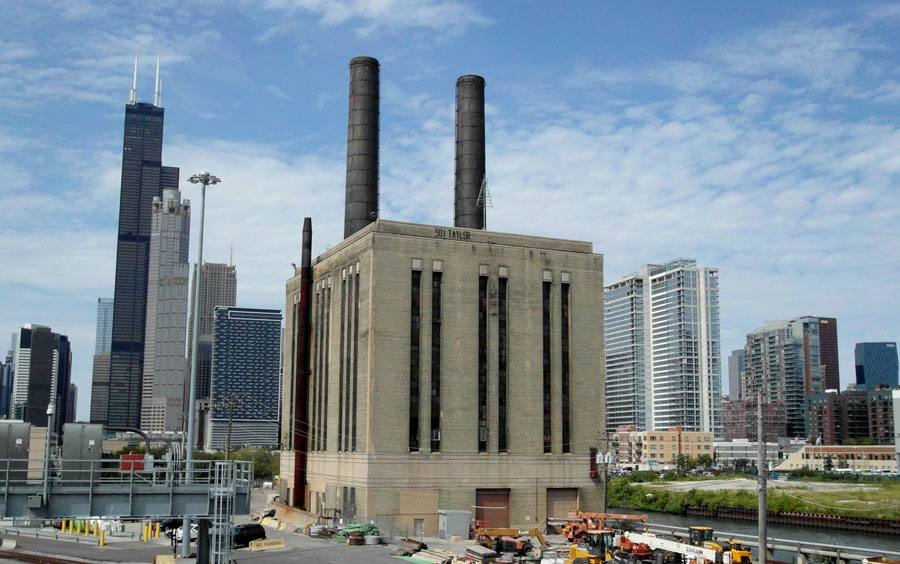-
Membership
Membership
Anyone with an interest in the history of the built environment is welcome to join the Society of Architectural Historians -
Conferences
Conferences
SAH Annual International Conferences bring members together for scholarly exchange and networking -
Publications
Publications
Through print and digital publications, SAH documents the history of the built environment and disseminates scholarship -
Programs
Programs
SAH promotes meaningful engagement with the history of the built environment through its programsMember Programs
-
Jobs & Opportunities
Jobs & Opportunities
SAH provides resources, fellowships, and grants to help further your career and professional life -
Support
Support
We invite you to support the educational mission of SAH by making a gift, becoming a member, or volunteering -
About
About
SAH promotes the study, interpretation, and conservation of the built environment worldwide for the benefit of all
SAH Letter Opposing the Proposed Demolition of the Union Station Power House in Chicago
Feb 25, 2021
by
SAH News

Union Station Power House, Chicago, via Wikimedia Commons
The SAH Heritage Conservation Committee has written a letter opposing the proposed demolition of the Union Station Power House in Chicago.
PDF Version
23 February 2021
Mr. Stephen J. Gardner
President, Amtrak
National Railroad Passenger Corporation
60 Massachusetts Ave NE Washington, DC 20002-4285
stephen.gardner@amtrak.com
Mr. William J. Flynn
Chief Executive Officer, Amtrak
National Railroad Passenger Corporation
60 Massachusetts Ave NE Washington, DC 20002-4285
bill.flynn@amtrak.com
Re: Proposed Demolition of the Union Station Power House, Chicago, IL
Dear Mr. Gardner and Mr. Flynn:
The Society of Architectural Historians (SAH) strongly opposes the proposed demolition of the Union Station Power House, Chicago.
The Union Station Power Plant was designed by Graham, Anderson, Probst and White, which was not only the descendent firm of D.H. Burnham and Co, but also the firm that designed many of Chicago’s most significant buildings, including Wrigley Field, the Merchandise Mart, and the Field Building. The Power House is part of a larger complex of buildings, systems, and rails designed by Graham, Anderson, Probst & White, including Union Station itself. Disused since 2011, it is now slated for demolition.
Chicago’s rise to economic prominence was largely the result of the national network of rail lines that converged in the city. This vast rail network transported raw materials such as coal, manufactured goods including iron and steel, and agricultural products including wheat, corn, grain, and animals, connecting Chicago with the rest of the United States. Chicago’s commanding location at the hub of this network was essential to its prosperity.
Graham, Anderson, Probst & White’s Union Station complex moved many of these goods, as well as vast numbers of passengers. The Power House was not designed as a mere service building to power the complex. Rather, through austere and masterful Art Deco detailing, it expressed its own civic role while complementing the more traditional classical design of Union Station itself. By its own design it confirmed that all architecture—be it civic, commercial, or industrial—was part of a larger civic order, within which service buildings performed an important, and even indispensable, civic function.
Amtrak, currently engaged in Section 106 review, has consistently advocated for demolition, and has made no proposals that include adaptive reuse of the building. While admittedly challenging, a creative adaptive reuse could result in a great variety of vital new uses.
The Society of Architectural Historians joins our colleagues at Preservation Chicago in strong opposition to the demolition of the Union Station Power House, and encourages a thoughtful investigation of alternative uses for this iconic building.
Sincerely,
Bryan Clark Green, Ph.D., LEED AP BD+C
Chair, Society of Architectural Historians Heritage Conservation Committee
cc: Mr. Kenneth Breisch, Ph.D.; Mr. Jeffrey Cody, Ph.D.; Mr. Anthony Cohn, AIA; Mr. David Fixler, FAIA; Ms. Priya Jain, AIA; Mr. Theodore H. Prudon, Ph.D., FAIA, Ms. Pauline Saliga; Ms. Deborah Slaton; Ms. Victoria Young, Ph.D.; Members, SAH Heritage Conservation Committee; Mr. Ward Miller, Executive Director, Preservation Chicago.


